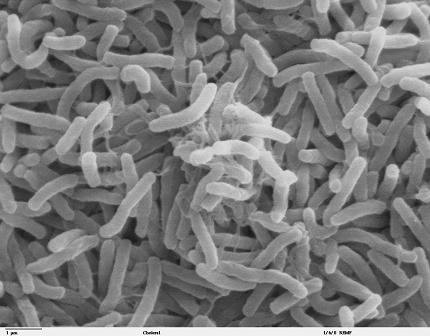A scientist from the University of Maryland predicts that it will be possible to predict outbreaks of the cholera epidemic using satellites

A month ago, an article was published on the Hidan website, which stated the connection between Bacteria for the Earth's climate. At the end of that article, a fascinating proposal was made: since it is likely that bacteria and viruses that cause human diseases can also float on the winds, it is likely that at some point it will be possible to predict the migration of infectious diseases through the atmosphere, similar to the way forecasters today predict the coming of rain.
Professor Rita Colwell (Colwell), from the University of Maryland in the United States, believes that it will be possible to predict the migration of diseases not only by the winds, but also by the currents of the sea. According to the lecture given by Professor Colwell at the recent 162nd meeting of the Society for General Microbiology, we may soon be able to predict outbreaks of the cholera epidemic using satellites.
Cholera is an infectious disease spread by the Vibrio cholera bacterium, which lives in rivers and seas in coastal areas. The patients excrete huge amounts of watery feces, which can reach up to ten liters a day. Death may come within hours, but usually within two days after the initial symptoms appear. Mortality in severe and untreated cases reaches about 50%. Cholera disease was in the past one of the most severe and widespread epidemics as a result of frequent contamination of drinking sources with feces, and the modern sanitary organization developed largely as a result of the fear that cholera provoked. At the same time, sophisticated sewage systems are still not available in some developing countries, where cholera epidemics break out several times a year.
In order to predict where the disease will attack, a model is needed to predict the movement of bacteria in sea and river currents. This movement is affected by temperature changes, sea level rise and other factors. Today there is still no ability to predict where the next epidemic will strike, but Professor Colwell claims that, "Scientists have found a definite relationship between the height and area of sea level and temperature and cholera epidemics. We can predict cholera epidemics using satellite sensors that will track these factors.”
Professor Colwell relies, among other things, on her research from 2000 in which information obtained from satellites that monitored the sea level in the Bay of Bengal was crossed with information accumulated about the various cholera cases in Bangladesh between the years 1992 and 1995. The results showed that the temperatures and height of the sea surface correspond to an annual cycle corresponding to that of Cholera cases in Bangladesh. A similar relationship exists between the phytoplankton populations (tiny single-celled creatures that live in the sea and do photosynthesis) and the Vibrio cholera populations. The sea surface warms in the spring, and the phytoplankton thrive under the wealth of energy that the sun gives them. The phytoplankton are used as food for the zooplankton (tiny marine predators that feed on the phytoplankton), and as a result the zooplankton population also increases, and together with them the Vibrio cholerae population.
The main effort now is in trying to create a model that can provide integrated forecasts of the climate conditions related to various infectious diseases. Such a model could provide predictions about the outbreak of epidemics, thus providing the authorities with the necessary knowledge to prevent them prematurely.
"It may be possible to provide preventive medicine to the countries of the world suffering from cholera epidemics," says Professor Colwell, "this is an international issue, and requires scientific organization on a global scale."

2 תגובות
And like Yoav, I also ask: wouldn't it be simpler and perhaps also cheaper to build sewage systems? The non-development
Vaccinations are also an expensive and very long process.
Isn't it cheaper to provide clean water?